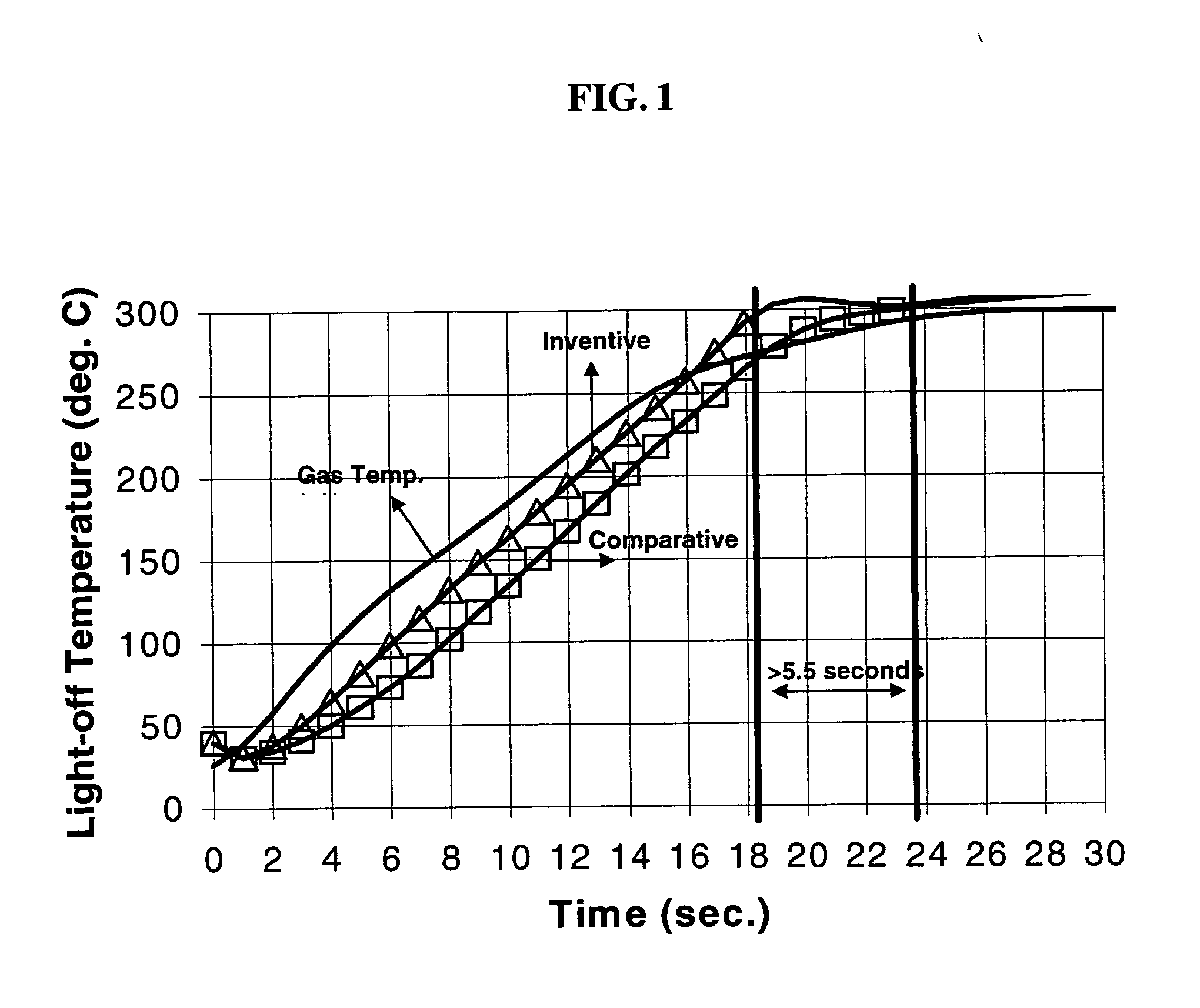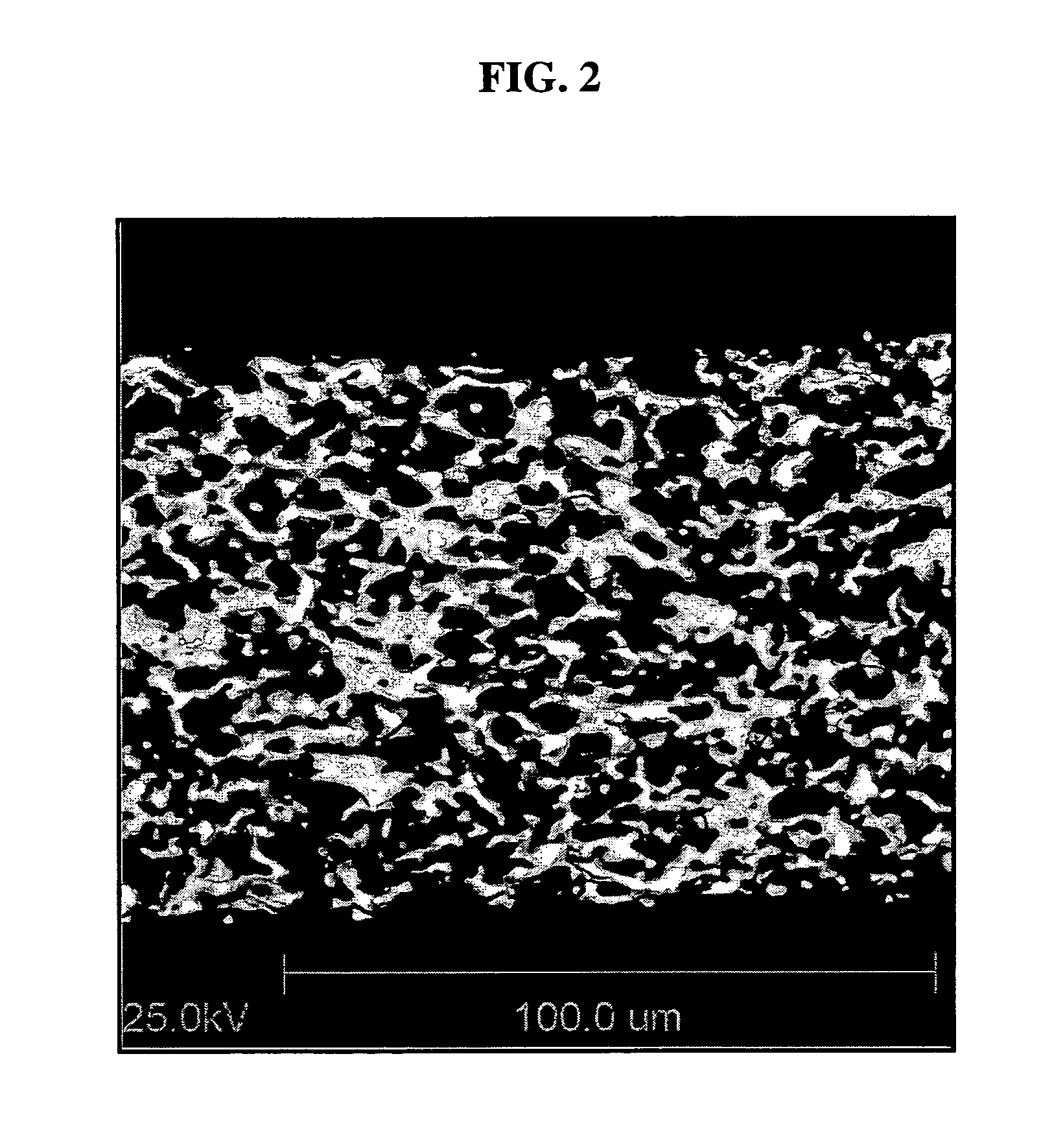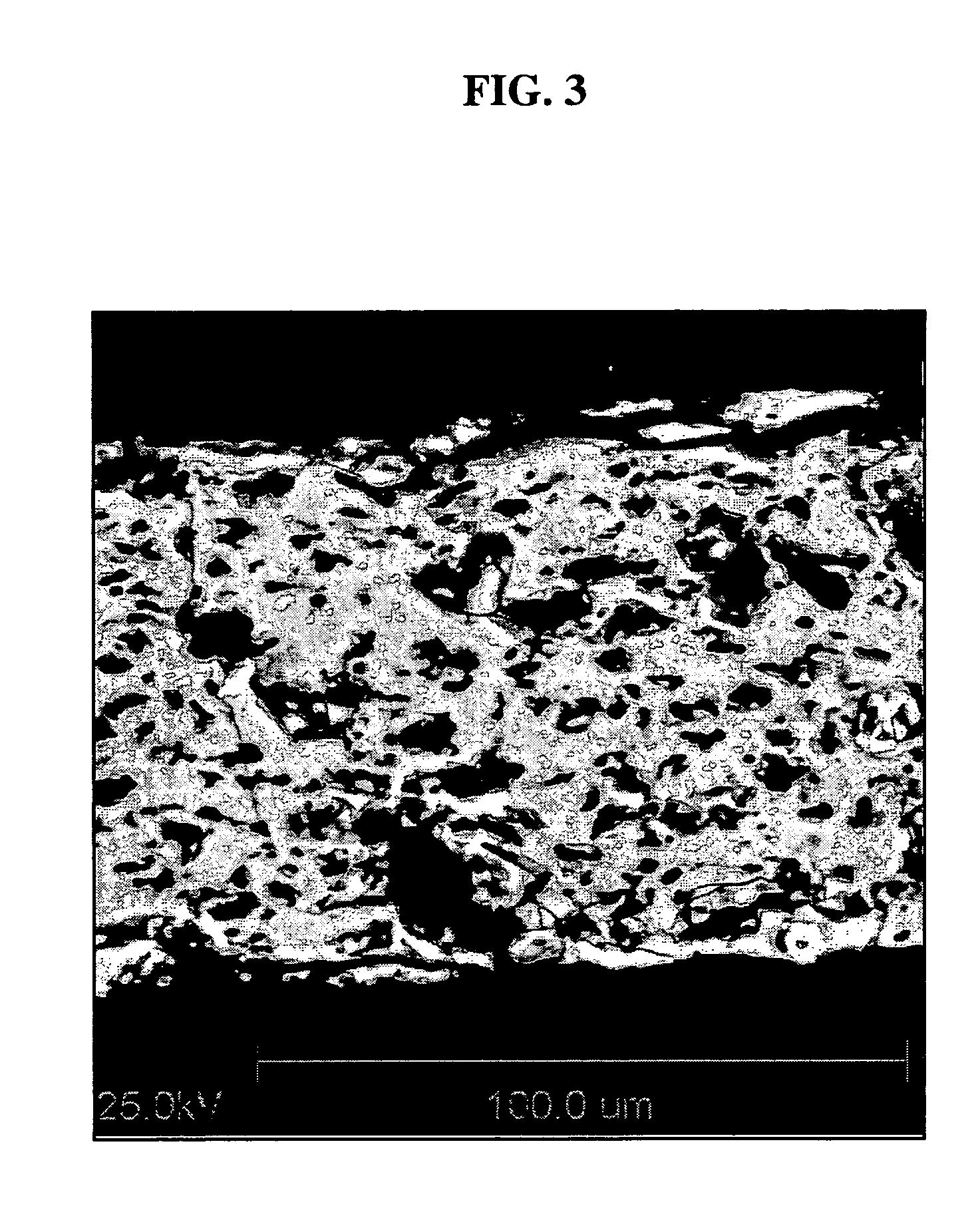High porosity honeycomb and method
a honeycomb and high porosity technology, applied in the field of ceramic bodies, can solve the problems of reducing the thickness of the cell web significantly, affecting the strength of the body, and affecting the performance of the body, so as to achieve high porosity, improve light-off performance, and high porosity
- Summary
- Abstract
- Description
- Claims
- Application Information
AI Technical Summary
Benefits of technology
Problems solved by technology
Method used
Image
Examples
examples
[0033] Comparative (non-inventive) and inventive examples are prepared by mixing together selected raw materials from Table 1 in the proportions listed in Table 2. Comparative example 1 is prepared according to the teachings of U.S. Pat. No. 6,506,336 and is absent a pore former. Inventive examples 1-4 are prepared by using a polyethylene wax dispersion to form a particulate pore forming material mixture as described above. Inventive example 5 is prepared by using a powdered polyethylene wax as the pore former.
[0034] The plasticized mixtures are extruded through a honeycomb-forming die under conditions suitable to form monoliths having a cellular density of between about 640-960 cells / in2 (99-149 cells / cm2) and a wall thickness of between about 2.8-4.2 mil (0.0028-0.0042 inch). The green ceramic honeycombs were sufficiently dried to remove water or other liquid phases that might be present and thereafter, first subjected to a heating in a commercially-available vacuum pyrolizer fro...
PUM
| Property | Measurement | Unit |
|---|---|---|
| pore size | aaaaa | aaaaa |
| porosity | aaaaa | aaaaa |
| thickness | aaaaa | aaaaa |
Abstract
Description
Claims
Application Information
 Login to View More
Login to View More - R&D
- Intellectual Property
- Life Sciences
- Materials
- Tech Scout
- Unparalleled Data Quality
- Higher Quality Content
- 60% Fewer Hallucinations
Browse by: Latest US Patents, China's latest patents, Technical Efficacy Thesaurus, Application Domain, Technology Topic, Popular Technical Reports.
© 2025 PatSnap. All rights reserved.Legal|Privacy policy|Modern Slavery Act Transparency Statement|Sitemap|About US| Contact US: help@patsnap.com



